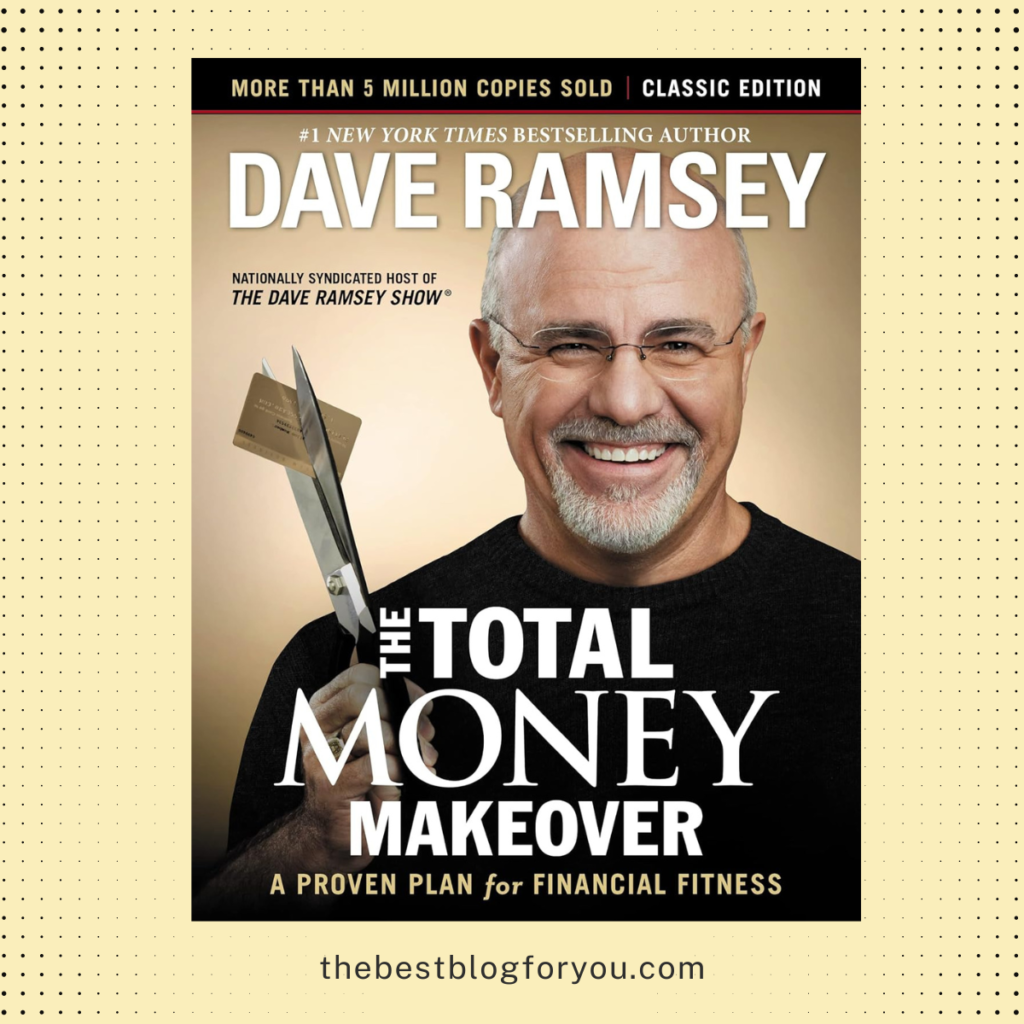
Intro
In a world where financial uncertainty often looms large, Dave Ramsey’s book, *The Total Money Makeover*, offers a transformative approach to managing money effectively. This comprehensive guide provides readers with the tools needed to achieve financial stability, eliminate debt, and ultimately build wealth. Whether you’re drowning in debt or simply looking to enhance your financial literacy, the principles laid out in *The Total Money Makeover* can serve as a beacon of hope and direction. Let’s explore the key takeaways from this influential book that can help reshape your financial future.
Understanding the Importance of a Financial Makeover

A pivotal lesson in *The Total Money Makeover* is recognizing why a financial makeover is essential. Dave Ramsey illustrates that financial woes often stem from deeper issues, such as inadequate financial literacy or detrimental spending habits. To enact meaningful change, understanding the psychological factors that influence your relationship with money is crucial. Emotions like fear, stress, or even overconfidence can drive poor financial choices. By confronting and reshaping these emotional connections, you can dismantle harmful financial behaviors.
Ramsey’s approach emphasizes that a financial makeover is not merely about crunching numbers. It involves adopting a new mindset and cultivating disciplined habits. This shift in perspective allows you to view money as a tool for achieving long-term goals rather than a source of short-term gratification. For many, this entails rethinking how they spend, save, and invest, aligning their actions with their financial objectives.
The book encourages readers to take a hard look at their financial practices and make a commitment to change. This process starts with small, manageable steps that build momentum over time. By breaking down financial goals into achievable tasks, you can create a sustainable path to financial health.
Ramsey’s method also underscores the importance of transparency and honesty with oneself and one’s family. Open discussions about money can foster a supportive environment, making it easier to stick to financial plans. This collective effort can be especially beneficial in households where financial habits are shared and influenced by multiple members.
Understanding the importance of a financial makeover sets the stage for adopting Ramsey’s actionable steps toward financial freedom.
The Foundation – Building an Emergency Fund

A key element of Dave Ramsey’s approach in *The Total Money Makeover* is the establishment of an emergency fund. This essential step provides a financial safety net that can safeguard you during unexpected events. Ramsey advises that your first priority should be saving $1,000 as quickly as possible. This initial sum acts as a buffer against minor emergencies, offering immediate financial security and reducing reliance on credit cards.
Once this initial goal is achieved, the next phase involves building a more comprehensive emergency fund. Ramsey recommends accumulating three to six months’ worth of living expenses. This larger fund serves as a robust shield against more significant financial setbacks, such as job loss or major medical expenses. By having this cushion, you can navigate unforeseen challenges without derailing your financial progress.
Having an emergency fund is crucial for maintaining financial stability. It allows you to handle crises without resorting to debt, thereby preventing a cycle of financial strain. The process of saving for an emergency fund also instills disciplined financial habits. It teaches you to prioritize savings and manage your money more effectively.
Moreover, Ramsey’s approach highlights the psychological benefits of having an emergency fund. Knowing that you have a financial buffer can reduce stress and provide peace of mind, making it easier to focus on long-term financial goals. The sense of security gained from an emergency fund empowers you to make more confident financial decisions.
The Debt Snowball Method – Paying Off Debt Strategically

One of the standout strategies in *The Total Money Makeover* is the Debt Snowball Method. This technique involves organizing your debts from the smallest balance to the largest, without considering interest rates. The goal is to focus on paying off the smallest debt first while continuing to make minimum payments on your other debts. Once the smallest debt is paid off, you redirect the funds you were using for that payment to the next smallest debt, thus gaining momentum.
Dave Ramsey advocates for this method because it offers psychological benefits in addition to financial ones. Each time you pay off a debt, you experience a sense of accomplishment and motivation. These small victories can build the confidence needed to tackle larger debts over time. This sense of achievement helps in maintaining discipline and staying committed to your financial makeover.
The Debt Snowball Method also simplifies the debt repayment process. By concentrating on one debt at a time, you can avoid feeling overwhelmed by the overall debt amount. This focused approach makes it easier to see progress, which can be incredibly encouraging.
Moreover, this method can positively impact your credit score. As you pay off individual debts, your credit utilization ratio decreases, which is beneficial for your credit health. Lowering your overall debt levels can also reduce financial stress, allowing you to make more informed and thoughtful financial decisions.
The Debt Snowball Method isn’t just about numbers; it’s about creating a sustainable, psychologically rewarding approach to eliminating debt and paving the way for financial stability.
Budgeting for Success – Every Dollar Has a Job

A crucial element of Dave Ramsey’s approach in *The Total Money Makeover* is the concept of a zero-based budget, where every dollar is assigned a purpose. This strategy ensures that all your income is accounted for and directed towards specific expenses, savings, or debt repayment. By implementing this method, you gain a clearer understanding of your financial inflows and outflows, reducing the likelihood of wasteful spending.
Ramsey advises that budgeting should be a proactive and ongoing process. At the start of each month, allocate funds to different categories such as housing, groceries, utilities, and entertainment. This helps in prioritizing essential expenses while also setting aside money for savings and debt repayment. Throughout the month, track your spending meticulously to ensure you stay within the allocated amounts for each category.
Regularly reviewing and adjusting your budget is vital. Life circumstances and financial priorities can change, requiring tweaks to your budget to stay on track. This dynamic approach makes it easier to adapt to unexpected expenses or shifts in your financial goals.
Ramsey also highlights the importance of involving your family in the budgeting process. Open discussions about financial goals and spending habits can foster accountability and mutual support, making it easier to adhere to the budget.
Ultimately, the goal is to create a budget that reflects your financial priorities and helps you make intentional decisions with your money. This disciplined approach can pave the way for long-term financial success and stability.
Building Wealth – Investing Wisely for the Future

Once debt has been eliminated and budgeting practices are in place, *The Total Money Makeover* shifts focus to building wealth through smart investments. Ramsey recommends investing 15% of your income into retirement accounts and other investment vehicles, like mutual funds and stocks. The book underscores the power of compound interest, illustrating how even small, consistent investments can grow substantially over time.
Ramsey emphasizes the importance of diversifying your investment portfolio to spread risk and increase potential returns. By investing in a mix of asset classes, you can create a more resilient financial foundation. The book also advises consulting with a financial advisor to tailor your investment strategy to your specific goals and risk tolerance.
Additionally, ongoing financial education is crucial for making informed investment decisions. Staying updated on market trends, understanding different investment options, and regularly reviewing your portfolio can help you optimize your investment strategy. Ramsey encourages readers to start investing as early as possible to maximize the benefits of compound growth, setting the stage for long-term financial security.
By following these investment principles, you can build a robust financial future that supports your retirement goals and provides financial independence. The disciplined approach to investing advocated in *The Total Money Makeover* is designed to help you achieve lasting wealth and financial peace.
Giving Back – The Role of Generosity in Financial Health

In *The Total Money Makeover*, Dave Ramsey emphasizes that true financial health extends beyond personal gain and encompasses a spirit of generosity. Ramsey encourages readers to integrate charitable giving into their financial plans. Giving back not only aids those in need but also fosters a sense of community and personal fulfillment.
Acts of generosity can reinforce positive financial behaviors and enhance your relationship with money. The practice of giving can cultivate gratitude and a broader perspective on wealth, helping you appreciate what you have and understand the impact of your resources. By incorporating regular charitable contributions into your budget, you create a habit of generosity that can enrich both your life and the lives of others. Ramsey’s approach highlights that financial success is not just about building wealth for oneself but also about using that wealth to make a positive difference in the world.

5 thoughts on “Key Takeaways from The Total Money Makeover”
Comments are closed.